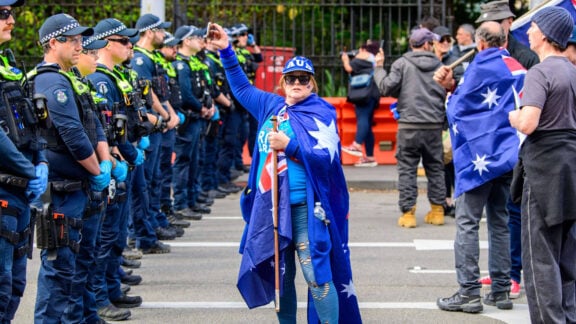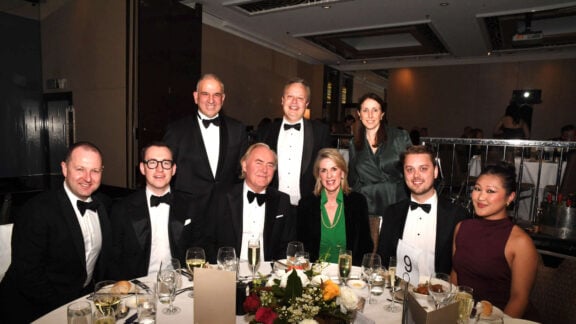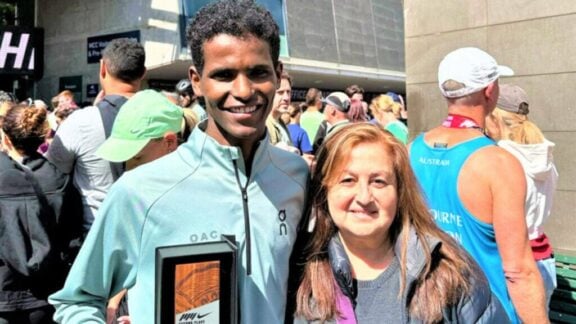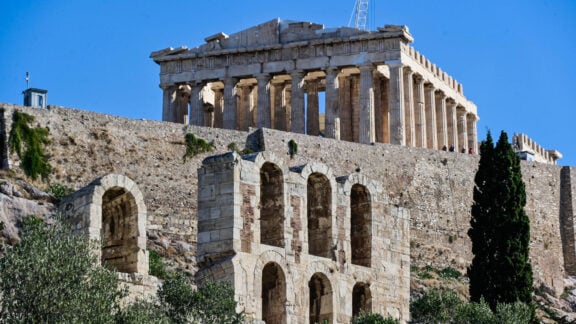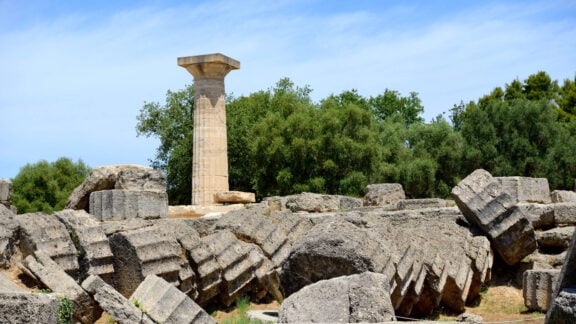Nicole Kiriakidis had made all arrangements for her husband’s 50th birthday celebration. “She asked me a year ago whether I prefer to have a party or a holiday.” George Kiriakidis tells Neos Kosmos he chose the holiday, and says that travelling with family, can’t be compared.
“I decided to celebrate the milestone by travelling with my family and Nicole just took everything on board from there.”
However, when planning the month-long trip to Japan, little did Nicole know that they would take part of Greco-Japanese music and dance workshops.

Greco-Japanese dance workshop
While in Japan the Kiriakidis couple and their children, Demetrius, 23, Epiphany (Theophania), 20, and Sophia, 19, delivered a dance workshop in collaboration with local group LYAGAS, following an invitation by fellow musician Shin-ya Ohno.
“Shin-Ya is someone who plays gaida and understands Balkan music,” Kiriakidis, the Greek folk dancer and musician says.

“Our mutual interests had us crossing paths and friending each other on Facebook.
“I asked him before departing Melbourne if he had a gig on while we were there, and he suggested something far better, that me and my family conduct a Greek folk-dance workshop to his band.
“So , he organised a gig and involved me.”

“Because I’m so heavily involved with community dance and music groups in Melbourne, I’m always on the ‘go-go’ mode. So, I thought this one month would be a break.
“And it makes me laugh because the biggest highlight of our trip as it turned out was Greek music and dancing. It’s like I can’t get away from it… I’m not complaining, these were moments of joy.”
“Everyone enjoyed it, the whole family, we’re still trying to grasp what we witnessed.”

At the start of the seminar, Kiriakidis faced an unexpected challenge. As a welcome gesture, Japanese musicians performed traditional Greek songs that participants danced to.
“I was prepared to stand in the middle and say, ‘this is the first step, then the second one, right foot here, left foot there’. I was planning to teach basic, straightforward things, things I normally teach when conducting an entry level beginner class.

Japanese dancers adept at Balkan folkways
He saw people dancing to Greek expertly and to music that “hardly gets played in Greece, let alone in Australia”.
“It blew my mind they were far advanced, beyond what I was prepared for so I had to change tactics and go to an unplanned plan B very quickly.”

After the initial introductions, Kiriakidis began the session by teaching some Florinian dances, he then delved into more advanced topics related to the history of these dances. He explored the symbolism behind the movements and highlighted the unique elements that characterise each dance, drawing connections to the specific Greek regions from which they originate.
When he realised that participants knew the lyrics of traditional Greek songs, he began sharing English translations.

During the gathering, Kiriakidis had a chat with 65-year-old Katsumi Iwata, a long-time member of the ΧΟΡΟΣ Japanese Balkan dance group established in 1973 by Hironobu Senzaki.
“He may be the first researcher of native Balkan dances in Japan,” Katsumi told Kiriakidis.
Katsumi told him that the group originated during the country’s occupation by the United States and the Allies from September 2, 1945, until the Treaty of San Francisco took effect on April 28, 1952. The occupation, led by the American military with support from the British, and under the supervision of the Far Eastern Commission, involved the beginning of Japan’s post -World War II reconstruction, after Imperial Japan surrendered to the Allies. It was then that that modern Japan became more open to more diverse global influences and as part of that many college and university students began to express an interest in the Balkan folk music tradition.

Over the years, the group has welcomed visiting dance teachers, from Balkan communities in United States and from the Balkan region.
“The music they were dancing to was not just from Greece, it was from all over the Balkans, Bulgaria, Turkey, Romania…as was the singing,” Kiriakidis says as he recalls attendees chanting while dancing “in the way Armenians do in certain dances with their pinky fingers linked.”
“I am still trying to grasp their level of expertise.”

In Japan, there is a long tradition of adopting, adapting, and becoming adept at new ideas. This is evident in how Japanese artists and practitioners have mastered forms like Jazz and Flamenco, among others. They embrace new influences, adapt them to their own culture, and skilfully become proficient in these art forms.
Respecting and embracing new cultural connections
The Melburnian family forged meaningful connections with 50-60 local dancers, fostering a profound mutual appreciation for Balkan cultural folk traditions.

Tokyo, Hakone, Odawara, Matsumoto and Osaka were among the cities the Kiriakidis family visited in their month-long Japan sojourn.
“Sightseeing and entertainment, from ancient temples, samurai sites and sumo wrestling, to Disneyland, Universal studios and anime… I’m just glad that I was able to expose my kids to something so unique, something so different.
“It is a beautiful country with so much to see and to behold. Japanese people and their culture showcase numerous aspects of conduct, and lifestyle that are enviable.”

Memories and experiences that last were primary aims for the family, says Kiriakidis.
However, what they gained from the Greco-Japanese dance encounter, he says, was something more valuable.
“It makes you realise how respected our culture is, and when I say, ‘our culture’, I don’t mean only Greek culture, but the shared culture over the Balkans and that area over hundreds of years.
“The Japanese, with their own very rich culture and seemingly no direct connection to ours, showed deep respect, admiration, and love for our culture, and that made us immensely proud to be a part of it.”


